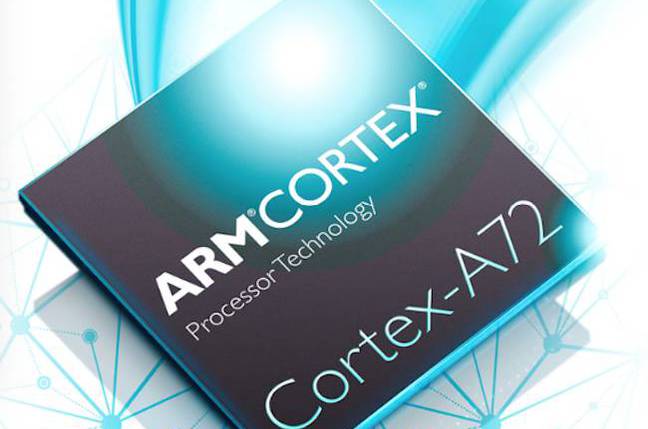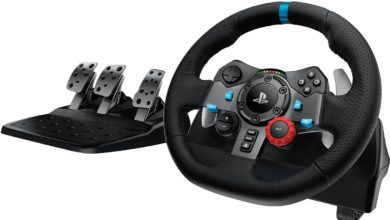ARM announces next generation Cortex and Mali chips
ARM is enjoying virtual monopoly in semiconductor design. Majority of smartphone, tablet, smartwatch chips are based on ARM’s CPU and GPU designs. This week, ARM has announced new IP based on ARMv8 based Cortex A72 processor (based on ARM v8-A instruction set, ARM Mali-T880 based GPU and CoreLink CCI-500 Cache Coherent Interconnect that allows higher system bandwitch and increases system efficiency. The new A72 CPU is 50 times faster than the ARM v7 instruction set based chips released 5 years ago. The new chips will be manufactured based on 16nm FinFET+ process with ARM POP™ IP. The new chips are already licensed to more than ten partners, HiSilicon, MediaTek and Rockchip being a few of them. Devices based on the new chip design are expected to hit the market in the year 2016.

“Our new premium mobile experience IP suite with the Cortex-A72 processor delivers a decisive step forward from the compelling user experiences provided by this year’s Cortex-A57 based devices,” said Pete Hutton, executive vice president and president, products groups, ARM. “For multiple generations, together with our partners, we have delivered the leading-edge of the premium mobile experience. Building on this, in 2016 the ARM ecosystem will deliver even slimmer, lighter, more immersive mobile devices that serve as your primary and only compute platform.”
Cortex-A72, based on ARM v8-A architecture is designed to deliver power efficient 64-bit computing and at the same time, provide full backward compatibility for 32-bit software. Based on a 16nm manufacturing process, the A72 can be clocked to 2.5GHz frequency and offers 3.5 times performance when compared to Cortex A-15 processed released last year. Chip makers can combie Cortex-A72 with Cortex-A53 CPU to create ARM big.LITTLE processor configureation. Even without big.LITTLE configuration, the new A72 can delivery upto 75% reduction in energy consumptions when matching performance of 2014 devices.
Mali-T880 GPU will come with 10-bit YUV support (natively) and this enables high fidelity 4K content processing. When combined with Mali-V550 video processor and Mali-DP550 display processors, this GPU can delivery truly stunning results. Mali-T880 can delivery upto 1.8 times the performance of the GPUs used in 2014 premium devices. With all this power in tap, ARM has managed to make T880 GPU consume 40% less power when compared to Mali-T760 based devices (on identical work load). With the advances in arithmetic capabilities, scalability and power efficiency, ARM is expecting the new GPU to be a game changer for gaming on smartphones/tablets and they expect console-like graphics quality in near future. If things move faster, we can expect to see 4K gaming on a smartphone before the same is supported by gaming consoles.
When it comes to improving responsiveness of user interfaces and handle intense work load of productivity applications, CoreLink CCI-500 (Cache Coherent Interconnect) will be able to create a much better experience, thanks to the increased peak memory system bandwidth and processor memory performance.
For 2016 devices, ARM and its partners will boost the mobile experience associated with use cases such as:
- Immersive and sophisticated image and video capture, including 4K120fps video content
- Console-class gaming performance and graphics
- Productivity suites requiring fluid handling of documents and office applications
- Natural language user interfaces capable of running natively on a smartphone.
“The need to be always connected with access to data, premium content and storage is dramatically changing as more devices and people use the connected cloud for digital experiences,” said George Yao, general manager of Turing Processor BU, HiSilicon. “HiSilicon is committed to offering platforms that support these demands by delivering more performance and outstanding energy-efficiency. We are pleased to support ARM as it introduces the first full suite of IP targeted at premium mobile platforms. The game-changing Cortex-A72 delivers more than 3X the performance of 2014 devices and Mali-T880 takes state-of-the-art graphics to the next level. Our partnership will usher in a new era for mobile and networking solutions.”
“The pace of innovation in mobile is accelerating at an unprecedented rate, which means we need to deliver the latest technology to our customers as fast as possible,” said Joe Chen, senior vice president of MediaTek. “We are pleased to partner with ARM for the launch of Cortex-A72, bringing the ARMv8-A architecture to market with leading performance and energy-efficiency benchmarks. Ultimately it is all about providing a better experience for end users as the complexity of applications, content and devices increases.”
“Increasingly, consumers are adopting mobile devices including smartphones, tablets, phablets and other large screen devices as their primary compute platforms. These larger form factor devices demand higher performance and energy-efficiency that scales across a variety of processor configurations,” said Mr. Feng Chen, chief marketing officer, Rockchip. “Rockchip is pleased to partner with ARM to introduce the Cortex-A72 to enable a wide range of premium mobile platforms that consumers can take advantage of. Rockchip is dedicated to bringing cutting-edge CPU and GPU technologies and solutions to our customers and end users to enable a compelling user experiences for personal and enterprise use.”
“TSMC’s 16FinFET+ process is already delivering exceptional results with SoCs based on Cortex-A57 thanks to rapid progress in yield and performance,” said Suk Lee, TSMC Senior Director, Design Infrastructure Marketing Division. “The combination of TSMC 16FF+ process technology and the implementation advantages of ARM POP IP gives our customers the opportunity to rapidly bring highly optimized mobile SoCs based on Cortex-A72 to market in early 2016.”
“Cadence and ARM have a long history of close collaboration that has resulted in some noteworthy achievements enabling mutual customer success,” said Dr. Chi-Ping Hsu, senior vice president and chief strategy officer for EDA, Cadence. “In support of the new ARM Premium mobile experience IP suite, Cadence has created a complete system-on-chip (SoC) environment to optimize its implementation, verify the system during OS boot-up and analyze interconnect subsystem performance. ARM used the Cadence digital and system-to-silicon verification tools and IP during the ARM Cortex-A72 processor development to ensure that the flow met complex mobile design requirements. This will help designers to shorten time to market while achieving optimal results at advanced process nodes.”
“Through more than 20 years of collaboration with ARM, we’ve enabled our customers to use Synopsys tools to quickly get their innovative products to market while meeting power, performance and area design targets,” said Deirdre Hanford, executive vice president, customer engagement, Synopsys. “Early adopters of ARM’s new suite of IP, including the Cortex-A72 processor, CoreLink CCI-500 interconnect, Mali-T880 GPU, Mali-V550 video processor and Mali-DP550 display processor, are already using Synopsys tools, methodology and professional services to design and verify their products aimed at delivering a premium mobile experience. For the ARM Cortex-A72, a member of this new suite of IP, our Reference Implementation (RI) builds on our successful RIs for ARM Cortex-A57 and Cortex-A53 and will enable designers to take advantage of the 10X increase in design throughput that Synopsys’ IC Compiler™ II product offers, while achieving the performance target in a mobile power envelope.”



